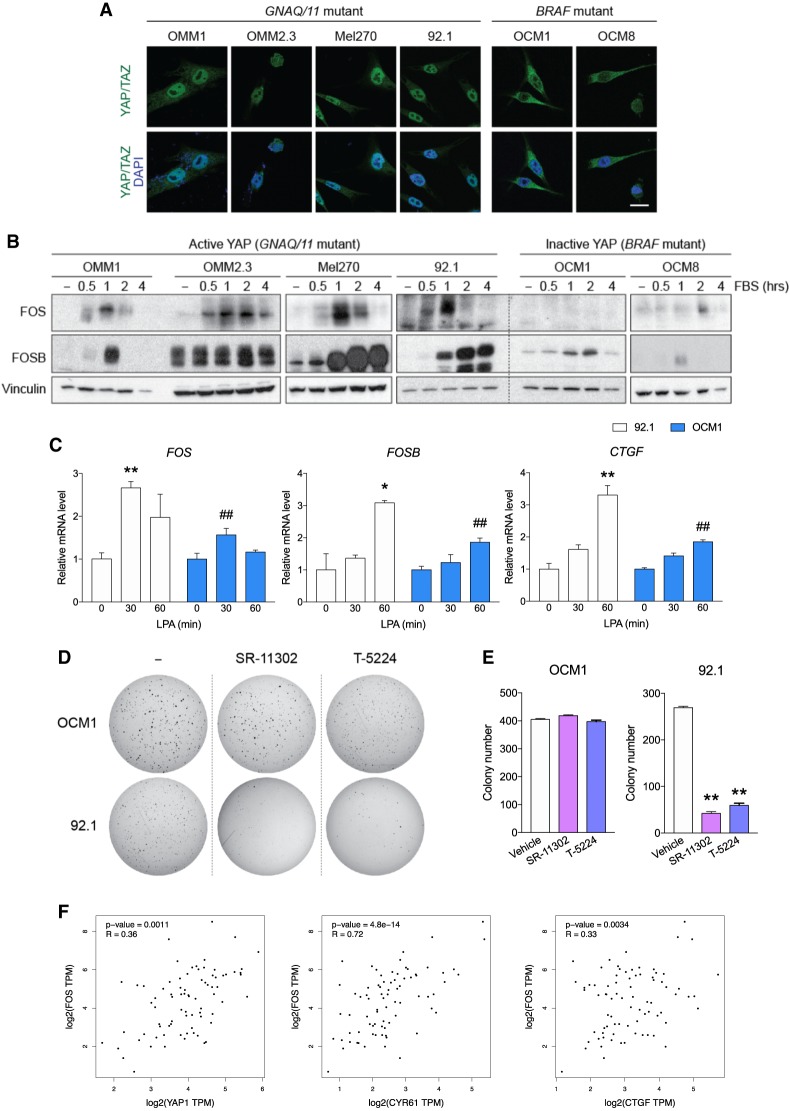Figure 5.
AP-1 is important for growth of YAP-dependent uveal melanoma cells. (A) YAP/TAZ localization occurs in the uveal melanoma with activating mutation in GNAQ or GNA11, but not in those with BRAF mutation. Different uveal melanoma cells having either GNA11Q209L (OMM1), QNAQQ209P (OMM2.3 and Mel270), or QNAQQ209L (92.1) were compared with those having BRAFV600E (OCM1 and OCM8). Cells were treated with 10% FBS for 1 h and immunostained for YAP/TAZ. Scale bar, 20 µm. (B) Serum induces strong expression of FOS and FOSB only in the YAP active (having mutations in GNAQ or GNA11), but not the YAP-repressed uveal melanoma (having BRAF mutation) cells. Uveal melanoma cells were compared for FOS and FOSB induction after a 16-h serum starvation, followed by stimulation with 10% FBS. (C) LPA-stimulated FOS and FOSB mRNA induction is greater in uveal melanoma harboring active YAP. 92.1 and OCM1 cells were serum-starved for 16 h and stimulated with LPA for qPCR. (*) P < 0.05; (**) P < 0.01, compared with nontreated samples; (##) P < 0.01, compared with 92.1 cells at same time point, by Student's t-test. (D) Inhibition of AP-1 attenuates anchorage-independent growth of the GNAQ mutant 92.1 cells, but not the BRAF mutant OCM1 cells. Same number (5000 cells) of OCM1 or 92.1 cells were seeded onto a culture medium containing 0.35% agar for 2 wk. The medium with AP-1 inhibitor SR-11302 (10 µM), T-5224 (30 µM), or vehicle was changed every 2 d. The colonies were stained with 0.005% crystal violet. (E) Quantification of colony formation for images in D. (**) P < 0.01, compared with vehicle-treated control, by Student's t-test. (F) Dot plots showing the positive correlation between FOS and YAP, CYR61, or CTGF mRNA expression in uveal melanoma from 80 patients. R-values and significance were calculated by Pearson's correlation.

